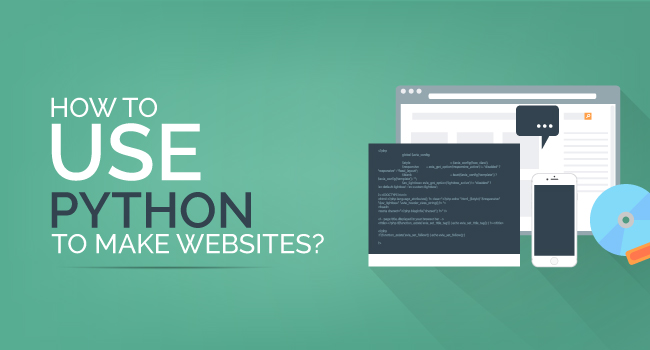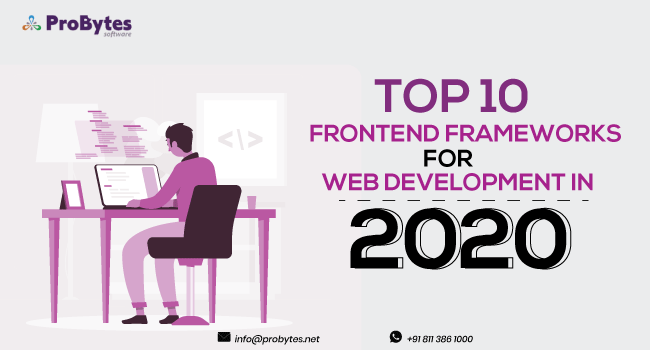Blog Category(283 Blogs)
Python Programming: All You Need To know About It
What Is Python?
Named after Monty Python, Python first came into existence in 1991, and since then it was a relatively new language to most of the programmers. Right after its advent, it was used for a multitude of tasks including testing microchips at Intel to building video games.
One of the reasons why Python gained popularity is due to the reason that it was most similar to the English language. Thus, Python emerged as a first-class programming language in the modern software development world.
Why Choose Python?
Python programming
There are many reasons why Python became a success across the world. We have listed the significant reasons why developers personally choose Python and recommend it to as many people as possible.
Readability:
As stated earlier, Python very closely resembles the English language and uses the words like ‘not’ and ‘in’ to build a script. Thus, when reading out a program or script aloud to an average person, the developer wouldn’t appear like an alien speaking an unknown language. Again, Python features strict punctuation rules which mean that the codes wouldn’t be filled with curly braces.
Python also has got a set of rules known as PEP 8 that gives information to the users on how to format the codes. Thus, whenever working with Python, the user knows where to put new lines, and whether written by a professional or novice, the script would still look the same.
Libraries:
It has almost been around 20 years since Python was first used. Thus, a lot of code written in Python by developers has eventually built up forming a vast library. Being an open source programming language, a lot of these codes have been released for others to use.
All these codes are collected on https://pypi.python.org/ which is pronounced as “pie-pee-eye”, and it is most commonly referred to as the “CheeseShop”. The software could be installed on any system and could be used when working on personal projects.
On the other hand, if you are a developer who would wish to use Python to build scripts with command-line arguments, you would have to install the “click” library to import your scripts into it and use it. Thus, there are libraries for almost every case that a developer can come up with from scientific calculations to image manipulation.
Community:
Python holds major conferences on every continent except for Antarctica and has user groups called PUG’s. The largest Python conference in North America is called Pycon NA and sells 2,500 tickets every year. Most importantly, Python supports women environment, and it has had over 30% women speakers.
Python came up with yet another innovative event in 2013, where Pycon NA started offering “Young Coder” workshops where attendees are brought to teach Python to kids between 9 to 16 years of age. The program helps children grow familiar with the language and eventually help them to hack and modify certain games on the Raspberry Pis that would be given to them. Being part of such a positive community helps in keeping you motivated.
Popularity:
Python is broadly used and supported among the web developers. Being highly rated in surveys held by Tiobe Index, Python runs on almost all major operating systems and platforms. Python is written in modest language thus it is much easier to grasp when you are a complete novice at web programming.
What Is Python Used For?
What is Python used for? This would be the most frequent question that you must be asking yourself if you are a beginner trying to step foot into the Python world of programming.
Python, as it is known, is a programming language that is mainly used for scripting and automation. Nonetheless, Python isn’t just a replacement for batch files and shell scripts. It is also used to automate interactions with web browsers, application GUIs, system provisioning, and configuration in tools.
For General Application Programming:
Python can build both CLI and cross-platform GUI applications. However, Python isn’t capable of generating a standalone binary from a script. Nonetheless, third-party packages such as cx_Freeze or PyInstaller could be used to accomplish these tasks.
For Data Science and Machine Learning:
Sophisticated data analysis has become one of the major and dynamic progressing areas in the IT sector. The vast libraries used in data science and machine learning use Python interfaces, making the language reach a certain height of popularity.
For Web Services and RESTful APIs:
As mentioned earlier, Python features native libraries and third-party web frameworks. They provide the quick and convenient way to weave everything from a simple REST API with just a few lines of codes to a full-blown, data-driven site. Furthermore, the latest version of Python features powerful support for asynchronous operations which allows sites to handle tens and thousands of requests every second.
For Meta-programming:
When it comes to Python, every aspect of the language is an object including the libraries and modules themselves. This very ability aids Python to function as a highly efficient code generator. Generating codes means Python is capable of writing applications that could manipulate their functions and have a kind of extensibility. This particular ability of Python is hard to the point of being impossible to achieve with other languages.
For Glue Code:
Python is often referred to as the “glue language”. Glue language means that it allows different codes to interoperate. These codes are in turn the elements that help Python execute data science and machine learning.
Again, Python is a high-level language. Thus, it is unsuitable for system-level programming. It is also not efficient at situations that call for cross-platform standalone binaries. Standalone apps could be built for Windows, Mac, and Linux using Python. However, the apps wouldn’t appear elegant or simple. Python is again not the best choice when speed is given the ultimate priority.
Python Codes
When writing a program using Python, there are two ways in which you can do it.
Functional programming
Object-oriented programming (OOP)
Functional programming involves using functions whereas object-oriented programming is all about the involvement of classes. Now you may ask, what is the difference between a class and a function?
A function is a collection of codes ought to perform a single operation. The operation of the function can only be acquired when the function’s name is used. And the class includes a group of functions that can be retrieved using an object. Another difference that may appear to be quite absurd would be the usage of “def” to begin a function and “class” to begin a class. Usually, class names are written in capital letters whereas methods don’t follow the capitalisation.
Python is an object-oriented programming language; thus anyone writing a program in Python is given the ability to come up with new classes of objects and utilise them. Thus the programmer is not forced to work with just the built-in classes of objects.
Loop
There are two types of a loop on python. The for loop and the while loop. First, let us take a look at the “For Loop”.
For Loop
The general format used for a loop is as follows.
for variable in sequence:
#some commands
#other commands after the loop
The loop starts from the colon, and the indents and new lines are what administers the end of the For loop. Now using the general format, let us weave a loop that could be used when programming.
#The following code demonstrates a list with strings
Ingredientslist = [“Rice”, “Water”, “Jelly”]
for i in ingredientslist:
print i
print “No longer in the loop”
Here, ‘i’ is the variable which moves along the string list becoming each string in turn. The above-written code brings in the following output.
- Rice
- Water
- Jelly
- No longer in the loop
While Loop
The while loop is similar to the For loop in many ways. But what makes them different is the fact that the while loop continues to loop until the specifically mentioned condition cease to become true. The while loop, unlike the For loop, isn’t asked to work along with any specific sequences.
i = 3
while i <= 15:
# some commands
i = i + 1 # a command that will eventually end the loop is naturally required
# other commands after while loop
When using loops, For loops are always simple and easy to use. However, while loops come handy if the number of iterations before the loop needs to end is unknown.
If Statement
If statements work the same way as the loops mentioned earlier. However, when using if statements, the key identifier used is a colon while starting and ending the statements. As an alternative of “if”, “else” can also be used after the loops and it gives out the same result.
If j intestlist:
# some commands
elif j == 5:
# some commands
else:
# some commands
Array Types
Lists
As we all know, a list is a sequence of variables collected together as a group. The range function is commonly used when creating lists of integers with the general format of range. 0 acts as a default for start and 1 as the default for the first step.
>>> range (3,8)
[3, 4 , 5, 6, 7]
A long side integers, lists can even accommodate strings in them with a mix of integers and floats. They can generally be created by a loop or by explicit creation. Nonetheless, it should be noted that the print statement would display a string/ variable/ list to the user.
>>> a = [5, 8, “pt”]
>>> print a
[5, 8, ‘pt’]
>>> print a [Ө]
5
Tuples
Tuples resemble the list, but on the negative side, they can’t be modified after their creation. So whatever changes you have got to make, you ought to do it when creating them. Tuples are assigned using the below mentioned code.
>>> x = (4, 1, 8, “string”, [1,Ө], [“j”, 4, “o”), 14)
Tuples give the programmer complete freedom of including any strings, other tuples, number, lists, objects, and functions in them. Another important thing to note when creating tuples is that the first element of any tuple is numbered as element “zero”. The data can be retrieved using the following code.
>>>x [Ө]
4
>>>x [3]
“string”
Dictionaries
A dictionary includes a list of reference keys each associated with a particular data. The important fact about a dictionary is that its operation isn’t affected by the order. When using dictionaries, the keys are not just consecutive integers as in a list. Instead, the keys could be floats, strings, or integers. You may get a better idea once you go through the below code.
>>> x = {} # creates a new empty dictionary – note the curly brackets denoting the creation of a dictionary
>>> x[4] = “programming” # the string “programming” is added to the dictionary x, with “4” as it’s reference
>>>x[“games”] = 12
>>>print x[“games”]
12
The reference keys and the stored values present in the dictionary can be of any type. Alongside, the new dictionary elements are additionally inserted as when they are created. In a list, this isn’t possible, because the user cannot access the list that exceeds the initially defined list dimensions. Let us take a look at the below program.
costs = {“CHICKEN”: 1.3, “BEEF”: 0.8, “MUTTON”: 12}
print “Cost of Meats”
for i in costs:
print i
print costs[i]
costs[“LAMB”] = 5
print “Updated Costs of Meats”
for i in costs:
print i
print costs[i]
This program would give the output as shown below.
Cost of Meats
- CHICKEN
- 3
- MUTTON
- 12
- BEEF
- 8
Updated Costs of Meats
-
LAMB
-
5
-
CHICKEN
-
3
-
MUTTON
-
12
-
BEEF
-
8
In the example given, you would find the use of curly brackets and colons that represent the assignment of data to the specific dictionary keys. While the variable i is allotted to the keys in the exact way it is done in case of the list. The dictionary can then be called using this key, and it would return the data saved under that specific key name. These kinds of loops are highly useful in crafting PuLP to model LPs.
Notes onThe Syntax Of List, Tuple, and Dictionary
Though you are familiar with the codes, there are specific fundamental factors to take care of when writing a program using Python. A few of the point to keep in mind when creating lists, tuples and dictionaries are listed below.
- Square brackets are used when creating lists
- Tuples are inserted using round brackets and a comma
- Parentheses work when creating dictionaries
No matter what kind of brackets the user use while programming after the user is done with the creation, the operations are always performed using square brackets to access the elements in the list, tuple, or dictionary. Nonetheless, the data retrieved would also change when using the square brackets. When the user is performing the function on a list or tuple, the data stored in the fourth element would be returned, whereas, if the same is performed on the dictionary, the data stored under the reference key of 3 would be restored.
List Comprehensions – The Fastest Way To Create Lists
List comprehensions are one of the fastest ways in which a user could create lists using Python. It saves time by banishing the use of multiple lines. They are apparently easy to understand and simple to use when programming.
For a better understanding, we would break up the program to snippets and go through each part.
>>> a = [i for i in range(5)]
>>>a
[0, 1, 2, 3, 4]
The program will create a list as is understood from the code and allocate it to the variable “a”. Whereas, the program given below make use of the if statement and the modulus operator. It is done to remove all the even numbers for only the odd numbers to be included in the list. Here modulus calculator does the function of calculating the remainder from an integer division.
>>>odds = [i for i in range(25) if i%2==1]
>>>odds
[1, 3, 5, 7, 9, 11, 13, 15, 17, 19, 21, 23]
The next program is created to form a list with every fifth value as in 0, 5, 10, and so on. At this point, it is to be noted that an existing list can be put to use in the creation of new lists.
>>>fifths = [i for i in range(25) if i%5==0]
>>>fifths
[0, 5, 10, 15, 20]
Now, let us look at this program.
>>> a = [i for i in range(25) if (i in odds and i not in fifths)]
This same program could have been done using a single step and that too right from scratch which is given below.
>>> a = [i for i in range(25) if (i%2==1 and i%5==0)]
Being a programmer or developer, the user needs to understand the importance of time and should adapt to the latest methodologies that save time. Because, time is indeed of the essence.
Functions
Functions and class is yet another important feature of Python, and it is a must that every developer knows about it. Firstly, let us talk about functions. Functions, as mentioned earlier, begins with the term “def” which is the abbreviation for define. Functions are generally inserted into the program using the below format.
def name(inputparameter1, inputparameter2, . . .):
#function body
When an input is allotted a value in the function, the value will only be put to use if no other value is passed in. This, in turn, means that the order of the input parameters isn’t of concern at all. Once the function is retrieved, the positional parameters are entered in the equivalent order. Again, the order of parameter doesn’t matter when keywords are used in the functions.
defstring_appender(head=’begin’, tail=’end’, end_message=’EOL’):
result = head + tail + end_message
return result
>>>string_appender(‘newbegin’, end_message = ‘StringOver’)
newbeginendStringOver
If you would take a look at the program given above, then you would come to know that here, the output function call is printed. The input of “newbegin” was used in place of the default value “begin” for the head. Nonetheless, the default value for the tail – “end” was used correctly. When writing programs, it should be kept in mind that no value is given for tail and thus, the end_message must be defined as a keyword.
Classes
Classes begin with the term “class”. To see how class work in Python, let us take a look at its structure.
class Pattern:
“””
Information on a specific pattern in the SpongeRoll Problem
“””
cost = 1
trimValue = 0.04
totalRollLength = 20
lenOpts = [5, 7, 9]
def __init__(self,name,lengths = None):
self.name = name
self.lengthsdict = dict(zip(self.lenOpts,lengths))
def __str__(self):
return self.name
def trim(self):
returnPattern.totalRollLength – sum([int(i)*self.lengthsdict[i] for i in self.lengthsdict])
The class would be as follows.
>>>Pattern.cost # The class attributes can be accessed without making an instance of the class
1
>>> a = Pattern(“PatternA”,[1,0,1])
>>>a.cost # a is now an instance of the Pattern class and is associated with Pattern class variables
1
>>> print a # This calls the Pattern.__str__() function “PatternA”
>>>a.trim() # This calls the Pattern.trim() function. Note that no input is required.
The class name used in the program is Pattern, and several variables come under the class. The variables are appropriate to any instance of the pattern class. And the functions used are
__init__
It is the function that creates an instance of the pattern class. It also allocates the attributes of lengths and name.
__str__
This function is solely responsible for deciding what to return if the class instance gets printed.
Trim
This function looks normal like any other function, if not for the class functions that it works. The function must be put in the input brackets.
Disadvantages of Python
Speed:
Speed is something that every developer or programmer would want on his device. After all, no person this world would love to sit and wait every time for their device to perform a particular task. If you are a developer looking for something that could save your time, then Python is not the programming language for you.
As a matter of fact, Python is way too slow. In fact, it is slower than C and C++. However, everything in this world comes with both a positive and negative side. Python is a high-level language, unlike C and C+. Thus, it is evident that Python may work slower than expected.
Mobile Development:
More than half of the world depends on their mobile phone to get most of the information that they want every day. While travelling or having a day off, most people won’t usually bother opening their PC to search for the smallest information or maybe to check their social media accounts.
Due to this reason, most of the developers are trying to come up with programs that would work the same on both PC and mobile devices. However, unlike the other programming languages, Python is not a great language for mobile development. Mobile computing through Python tends to be weaker, and this is the reason why a very few developers take up the challenge of programming mobile applications using Python.
Memory Consumption:
Now with all the tasks up to your sleeves, the last thing that you would want to see happening would be your memory running out of space. And once your system runs out of space, it takes a tedious amount of work to bring it back to normal.
You would already know that Python is flexible with data types if you have worked with it before. However, due to this reason, Python consumes a whole lot of memory. Thus, Python won’t be a better option when working in memory intensive tasks.
Database Access:
Python’s database layer was recently found to be a bit underdeveloped and unrefined when compared to other popular technologies such as JDBC and ODBC. Thus enterprises looking out for smooth interaction and complex legacy data ought to stay away from the Python because it has limitations with the database access. Nonetheless, you could still use Python if you have got sufficient skills to pull off any task.
Runtime Errors:
Python, as mentioned earlier, is easy to learn and program. The language is similar to the English language, and thus every novice can find their way through it with ease. However, Python programmers recently came up with several issues related to the design of the language. The reason that they gave for the mishap was that the language was dynamically typed.
These issues don’t show up while creating the applications. The errors show up only at the runtime. The developers demanded that the language should be tested more thoroughly to eliminate the mistakes because they aren’t ready to give up on Python.
FAQ
What is known as a docstring in Python?
Docstring in Python stand as an abbreviation of documentation strings. Docstring or documentation strings provide an amble way to link documentation with Python modules, classes, functions, and methods. Docstring was initially introduced to remove the unpleasant feeling that the use of comments gives when documenting a function using comments. Docstring being a multi-line string isn’t connected to anything and thus doesn’t require the need of comments to make the screen appear cluttered and clumsy.
The conventional source code comments usually describe how the function performs a particular task. Whereas, docstring does the opposite and describe what a function does rather than how it does.
In most of the prominent cases, one-line docstrings are put to use. An example of using a docstring is given below.
def sum(x, y):
“””Returns arg1 value add to arg2 value.”””
returna+b
printsum.__doc__
Output:
Returns arg1 value add to arg2 value.
It is better to give more information about a function when writing larger and more complex projects.
What is the purpose of pass statement in Python?
As the name suggests, the pass statement does not act in particular. Instead, it serves as a placeholder when a statement is necessary, but no action is to be performed. When the Python interpreter comes across the pass statement, it continues executing the same way as it was doing before. However, if the pass statement isn’t added in the test_method one of the given program, then a pop-up box would show Indentation Error.
classtest_class(object):
def test_method_1(self):
pass
deftest_method_2(self):
print “calling…me…”
In short, the pass statement does nothing but pass the statement to the next one. But on the other hand, the Python interpreter reads it, and if accidentally placed in if statements or functions, the pass statement is considered as a statement too.
How to achieve web scraping with Python?
Before proceeding with the question, it is important to mention what web scraping is. Web scraping is nothing but software that performs the technique of deriving information from different websites. The process is mainly focused on transforming unstructured data on the web to structures data. To achieve this transformation with Python, Python provides you with several options.
Beautiful Shop
The first method includes using the Python library for extracting data out of the HTML and XML files. Beautiful ship lets you squeeze out specific information from the webpage by removing HTML markup. On the upper hand, it even saves the information that is extracted. Professional developers can even scrape information from web pages in the form of paragraphs, lists, and tables.
A long side Beautiful Shop, Urllib 2 is another library that could be used to achieve the same tasks. Urllib even offers the feature of adding extra filters when in need of extracting particulate information from the web pages.
Mechanize
Unlike Beauty Shop, Mechanize is a Python module that is used to navigate through web forms. It acts like any standard browser but to scrape information.
Scrapemark
Scrapemark is super easy to use when extracting information from a web page as it utilises an HTML-like markup language. The results though are retrieved as Python lists and dictionaries.
Scrapy
What makes Scrapy attractive is it is a free and open source web scraping framework. It features all the tools necessary for extracting data from web pages, processing them, and storing them as per your requirement.
How does ternary operator work in Python?
Ternary operators are most commonly referred to as conditional expressions. They analyse something based on a given condition being true or false. Furthermore, the tests are done using a single line rather than the multiline if-else.
The syntax is given below.
[true] if [expression] else [false]
The result given would read “True” if the condition is satisfied, or else it reads “False”. Ternary operators are the quickest way to test a condition while using multiline statements would put hours of hard work to waste. It makes the code appear compact and maintainable.
x=20
y=10
res = “x greater” if x>y else “y greater”
print(res)
What is the purpose of self in Python?
class Student:
def __init__(self, name, age):
self.name = name
self.age = age
defstudent_info(self):
print(“Name : “, self.name, ” Age : “,self.age)
The self in Python usually refers to the instance of the class. People often mistake self for a keyword as it is used as a keyword in C++. However, in Python, self is a coding convention. Mostly, the first argument of any method is termed as self. Self makes it easier to differentiate between instance attributes and local variables.
When variables are declared within a class without using the self-reference, then it means that the variables would be shared by all instances grouped under that particular class.
How to debug a program in Python?
Python comes with an inbuilt debugger which is only available as a module called PDB. It allows setting conditional breakpoints, stacking information, running through the source code etc.
importpdb
msg = “this is a test”
pdb.set_trace()
print(msg)
As in the example, pdb.set_trace ( ) should be inserted wherever you would want it o function as a breakpoint. However, spending time in debuggers can be a bit hectic; thus you can dump execution trace and analyse it a bit later.
What are literals in Python?
The easily visible method to write a value is known as literal. Literals most commonly represent the primitive forms of language and are often integers, Booleans, floating point, and character strings.
What does ‘Yield’ do in Python?
When a compiler comes across the yield keyword anywhere in a function, it makes the function no longer return through the return statement. What it does instead is return a ‘pending list’ object referred to as a generator. The generator is repeatable and includes a built-in protocol to visit each element in a particular order.
In other words, a function called yield becomes a generator and no longer remains a standard function.
defmakeSqure(n):
i = 1
while i < n:
yield i * i
i += 1
print(list(makeSqure(5)))
In short, the above-given code generates the following output.
[1, 4, 9, 16]
The example demonstrates how the yield statement debars the function’s execution and sends the value back to the caller during each repetition.
What is meant by Accessor and Mutator methods in Python?
classMyClass():
def __init__(self):
self.__my_attr = 3
defset_my_attr(self,val):
self.__my_attr = val
defget_my_attr(self):
return self.__my_attr
obj1 = MyClass()
print (obj1.get_my_attr())
obj1.set_my_attr(7)
print (obj1.get_my_attr())
It is always a better idea to keep the internal data within an object private. Thus we still need specific methods to allow the user to access the data in a controlled way. The method defined by the class to bring about this change can either be an Accessor or a Mutator method.
Through the accessor method, the function is made to return a copy of an internal variable or computed value. While a mutator modifies the value of the internal data variable, the most straightforward way in which a mutator functions is by adding a variable directly to a new value.
What are the different files processing modes supported by Python?
A file as mentioned here can be any amount of information or data stored in the computer storage. And Python can manipulate these files by default. A significant part of the manipulation can be done using a file object, and Python language supports two types of files, namely text file, and binary file.
As the name suggests, text file store data in the form of text readable by humans whereas, the binary file contains data stored in binary numbers which can only be read by a computer. Python comes with a built-in function called open() to open a file.
open(file_name , [access_mode],[buffer_size],[encoding])
The access mode by default is set to read-only. Alongside there are several other modes to open a file too. It includes ‘w’ which open the file for writing, and all the data from the file would be cleared from it. ‘x’ open for the exclusive creation and fail to open the file if it already exists. ‘a’ is again used to open the file for writing, and ‘b’ opens the file in binary mode.
Python is fantastic programming in itself. It does take a bit of time to master the language but compared to the other programming language, as it is ample to learn. And once you have mastered the language, there is nothing else that you would require because it is time to start weaving beautiful creations.

 Python
Python Magento
Magento Odoo
Odoo How To
How To How Much
How Much Yii Development
Yii Development Core PHP
Core PHP Prestashop
Prestashop Latest News
Latest News Education
Education Web Design
Web Design Business
Business Ecommerce
Ecommerce Travel
Travel Banking and Finance
Banking and Finance Web Development
Web Development Ruby On Rails
Ruby On Rails Joomla Development
Joomla Development Ecommerce
Ecommerce Magento Development Services
Magento Development Services Hire a Developer
Hire a Developer Web Crawling Services
Web Crawling Services












